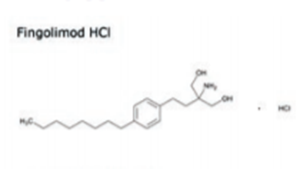This article from Issue 10 of the Analytix Reporter, produced by Merck, demonstrates a rapid, accurate, and simple method that was developed for the total chromatographic purity analysis of Fingolimod hydrochloride by HPLC-DAD, well within the boundaries of the USP43-NF38 monograph methods.
 In this article, a rapid, accurate, and simple method is presented for the total chromatographic purity analysis of fingolimod hydrochloride using High Performance Liquid Chromatography equipped with a Diode Array Detector (HPLC-DAD). The experimental conditions follow guidelines, with minor, but allowed modifications from the USP43-NF38 monograph methods for the assay and organic impurity profiling of fingolimod hydrochloride. Using the 33-minute gradient method from USP and a Purospher® STAR RP-18 HPLC column (150 x 3.0 mm, 3 µm), baseline separation of fingolimod and its impurities was achieved. A 0.1% solution of phosphoric acid in water and acetonitrile were used as the mobile phase for the gradient elution.
In this article, a rapid, accurate, and simple method is presented for the total chromatographic purity analysis of fingolimod hydrochloride using High Performance Liquid Chromatography equipped with a Diode Array Detector (HPLC-DAD). The experimental conditions follow guidelines, with minor, but allowed modifications from the USP43-NF38 monograph methods for the assay and organic impurity profiling of fingolimod hydrochloride. Using the 33-minute gradient method from USP and a Purospher® STAR RP-18 HPLC column (150 x 3.0 mm, 3 µm), baseline separation of fingolimod and its impurities was achieved. A 0.1% solution of phosphoric acid in water and acetonitrile were used as the mobile phase for the gradient elution.
Experimental
For full details, please download the article.
Conclusion
A rapid, accurate, and simple method for the total chromatographic purity analysis of Fingolimod
hydrochloride by HPLC-DAD was developed, well within the boundaries of the USP43-NF38 monograph methods. The applied conditions met the system suitability criteria, and the method demonstrated good resolution/selectivity, reproducibility, and sensitivity.
To receive regular copies of the Analytix Reporter eNewsletter provide your email address below:
*The life science business of Merck operates as MilliporeSigma in the U.S. and Canada.
